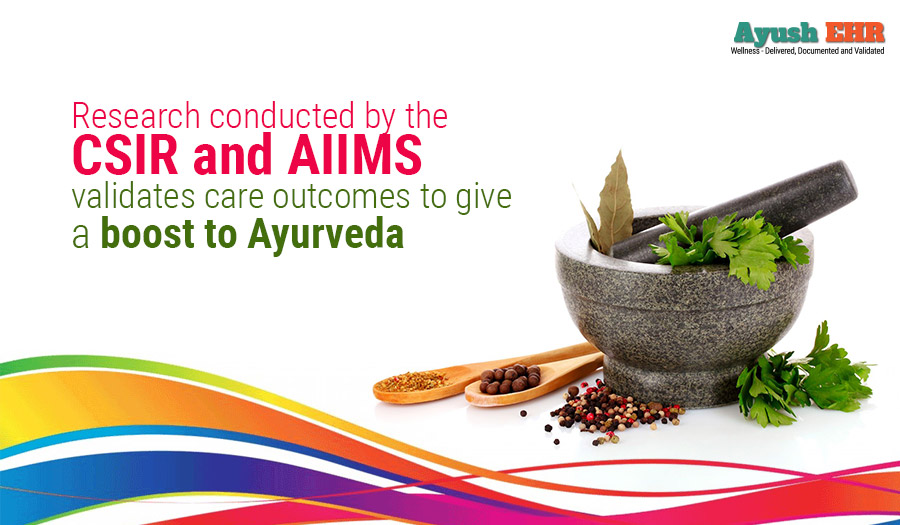Research conducted by the CSIR and AIIMS validates care outcomes to give a boost to Ayurveda

Ayurveda, India’s very own traditional medicine, is stretching its tenets across the globe as one of the most sought-after alternative healing & rejuvenation mantra. Yet, in its homeland, the ancient practice has been struggling to find its feet as a dominant stream of medicine.
But a recent and big data analysis on Ayurveda fore-speaks a changing tide. The research conducted by the Council of Scientific & Industrial Research (CSIR), and All India Institute of Medical Sciences (AIIMS) unveils the gaining popularity of this parallel branch of medicine especially in the chronic illness category. The study, first of its kind, reveals that those who suffer from chronic diseases tend to opt for Ayurveda when modern medicine fails to provide the expected relief. As per the analysis, nearly 76% of such patients receive partial or complete alleviation.
The research analysis was a co-venture of the CSIR & AIMS with the Faridabad-based Jiva Ayurveda and Oxyent Medical Private Limited, Delhi. The study was carried on over 1,07,000 patients and shows quite a few interesting patterns of Ayurveda’s demand and popularity.
The analysis concludes that the most number of health issues which seeks Ayurveda treatment is related to the digestive system, followed by irregularities of the endocrine (diabetes/obesity/thyroid disorder), underweight (mostly in women), skin problems, respiratory and nervous system disorders. More than 80% of the patients suffered from chronic diseases for more than one year before turning to Ayurveda. In 75% of such cases, even with some of the long-standing and chronic diseases, the treatment was found effective, with a rare 0.9% where the condition aggravated.
“Ayurveda has little scientific documentation and had no big data analysis till now. Our study for the first time shows interesting patterns and proves its potential for use in preventive health care,” team member Samir K Brahmachari, one of the prominent Indian biologists and former director general of CSIR, told DH.
Jiva, a manufacturer of Ayurveda medicines, runs an institute on Ayurveda research and 40 odd clinics across the nation. Jiva has a telemedicine network for Ayurvedic consultation as well, where the company provides medicines for those who avail of the service. From nearly 380,000 patients who accessed the telemedicine network and visited the clinics, about 107,000 data was chosen for the analysis. According to Pratap Chauhan, a team member and one of the senior researchers at Jiva, they deploy a standard of 10 parameters to validate the treatment efficacy. Regular tests are carried out before and after the treatment.
As per the statistics published in the latest issue of the international open access journal “Progress in Preventive Medicine”, in more than 58% of the cases, the patients reported “slight improvement”. 14% affirmed “significant progress”, while 3.6% cited “no relief”. The study affirms that availing Ayurveda treatment at an early stage ensures better results and relief. “We have also standardised diagnostic protocols for 25 diseases,” Mr. Chauhan said.
Though India has over 700,000 registered practitioners of traditional medicine (the majority in Ayurveda), obscure methods of documentation with a lack of digital footprint make it hard to trace or record the effectiveness or progress of Ayurveda treatments.
“Another hurdle in documentation is the fact that Ayurveda is recommended and favored mostly through word of mouth. There is no systematic study to tell us the demographics of who seeks treatment for what kind of diseases. The big data analysis can provide an unbiased look into the trend,” commented Mitali Mukherjee, a senior scientist at the Delhi-based Institute of Genomics and Integrated Biology, who was not directly involved in the study.


